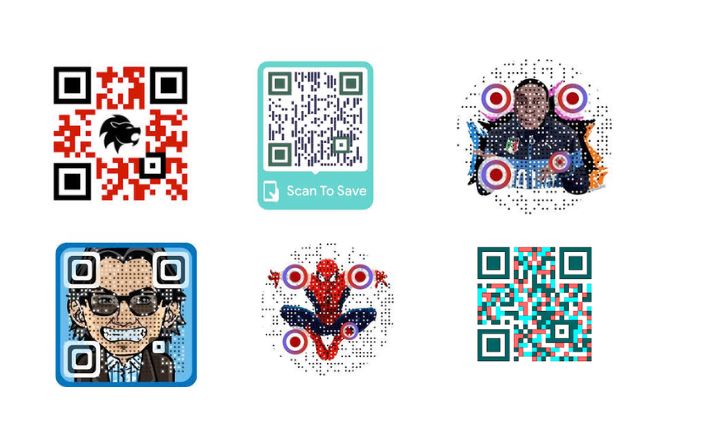2D Code Generator: Your Guide to Creating and Utilizing Two-Dimensional Codes
Created on 17 September, 2024 • 357 views • 4 minutes read

Learn how to use a 2D code generator to create versatile and customizable two-dimensional codes for various applications. Discover the benefits, best practices, and features of an effective 2D code generator.
In the world of data encoding, 2D codes have become increasingly essential for various applications, from marketing to product tracking. A 2D code generator is a versatile tool that allows users to create two-dimensional codes, such as QR codes, that offer greater data capacity and flexibility compared to traditional barcodes. This guide will explore what a 2D code generator is, its benefits, and how to use it effectively.
What is a 2D Code Generator?
A 2D code generator is a tool or software that creates two-dimensional codes designed to encode information in a compact and easily scannable format. Unlike one-dimensional barcodes, which store data linearly, 2D codes can store data both horizontally and vertically, allowing them to hold much more information in the same space. QR codes are a common example of 2D codes, but other types include Data Matrix codes and PDF417 codes.
Benefits of Using a 2D Code Generator
- Increased Data Capacity: 2D codes can store significantly more information than one-dimensional barcodes. This includes longer URLs, detailed product information, and other complex data.
- Versatility: A 2D code generator can create various types of 2D codes, including QR codes, Data Matrix codes, and PDF417 codes. This versatility makes it suitable for a wide range of applications, from marketing to inventory management.
- Customization Options: Many 2D code generators offer customization features that allow you to design codes that align with your brand’s aesthetics. You can adjust colors, add logos, and modify the design to make your codes stand out.
- Improved User Experience: 2D codes, especially QR codes, can be scanned quickly using smartphones, providing instant access to encoded information. This enhances user experience and facilitates easy data retrieval.
- Cost-Effectiveness: Most 2D code generators are either free or offer affordable pricing for advanced features. This makes it a budget-friendly solution for creating and managing 2D codes.
- Tracking and Analytics: Advanced 2D code generators may include tracking features that allow you to monitor how often your codes are scanned, gather data on user interactions, and analyze performance for better decision-making.
How to Use a 2D Code Generator
- Choose a Reliable 2D Code Generator: Select a 2D code generator that meets your needs. For a robust and versatile option, visit this link to start creating your 2D codes.
- Enter Your Data: Input the information you want to encode into the 2D code. This could be a URL, text, contact details, or any other data you need to share.
- Customize Your Code: Utilize the customization features to tailor your 2D code. Adjust colors, add your logo, and modify the design to ensure it aligns with your branding and stands out in your materials.
- Generate and Download: Once you’ve customized your 2D code, click the generate button. Download the code in your preferred format (PNG, JPG, SVG, etc.) for use in your physical and digital assets.
- Test the Code: Before deploying your 2D code, scan it with different devices and code readers to ensure it functions correctly and accurately displays the encoded information.
- Implement and Track: Use your 2D codes in marketing materials, product packaging, or online platforms. If your 2D code generator offers tracking features, monitor the performance to gather insights and optimize your strategies.
Applications of 2D Code Generators
- Marketing and Promotions: Integrate 2D codes into your marketing materials to provide quick access to promotions, special offers, and product information. This can enhance customer engagement and boost the effectiveness of your campaigns.
- Product Tracking: Use 2D codes for tracking products throughout the supply chain. They can store detailed product information and facilitate accurate inventory management.
- Event Management: Employ 2D codes for event tickets and registrations. They streamline the check-in process and can store attendee details for efficient event management.
- Retail and E-Commerce: Incorporate 2D codes into your retail and e-commerce platforms to facilitate product lookups, streamline checkout processes, and improve customer experience.
- Educational Resources: Add 2D codes to educational materials to provide access to additional resources, interactive content, or links to further reading.
Best Practices for Using a 2D Code Generator
- Ensure High Quality: Make sure your 2D code is clear and high-resolution to ensure it can be easily scanned by various devices and readers.
- Optimize Size and Placement: Choose an appropriate size for your 2D code based on its intended use. It should be large enough to scan easily but not so large that it disrupts the design.
- Include a Call to Action (CTA): Encourage users to scan your 2D code by including a CTA, such as “Scan to Learn More” or “Get Your Discount.”
- Test Across Devices: Verify that your 2D code works well with different devices and code readers to ensure broad compatibility.
- Monitor and Analyze: Use tracking features to analyze the performance of your 2D codes. Gather data on scans, user behavior, and engagement to refine your strategies and improve results.
Conclusion
A 2D code generator is a valuable tool for creating versatile and customizable two-dimensional codes that enhance user interaction, streamline operations, and support a variety of applications. By leveraging the features of a 2D code generator, you can create effective codes tailored to your specific needs and gain valuable insights into their performance.
To start generating your 2D codes, visit this link and explore the capabilities of a top-notch 2D code generator today.